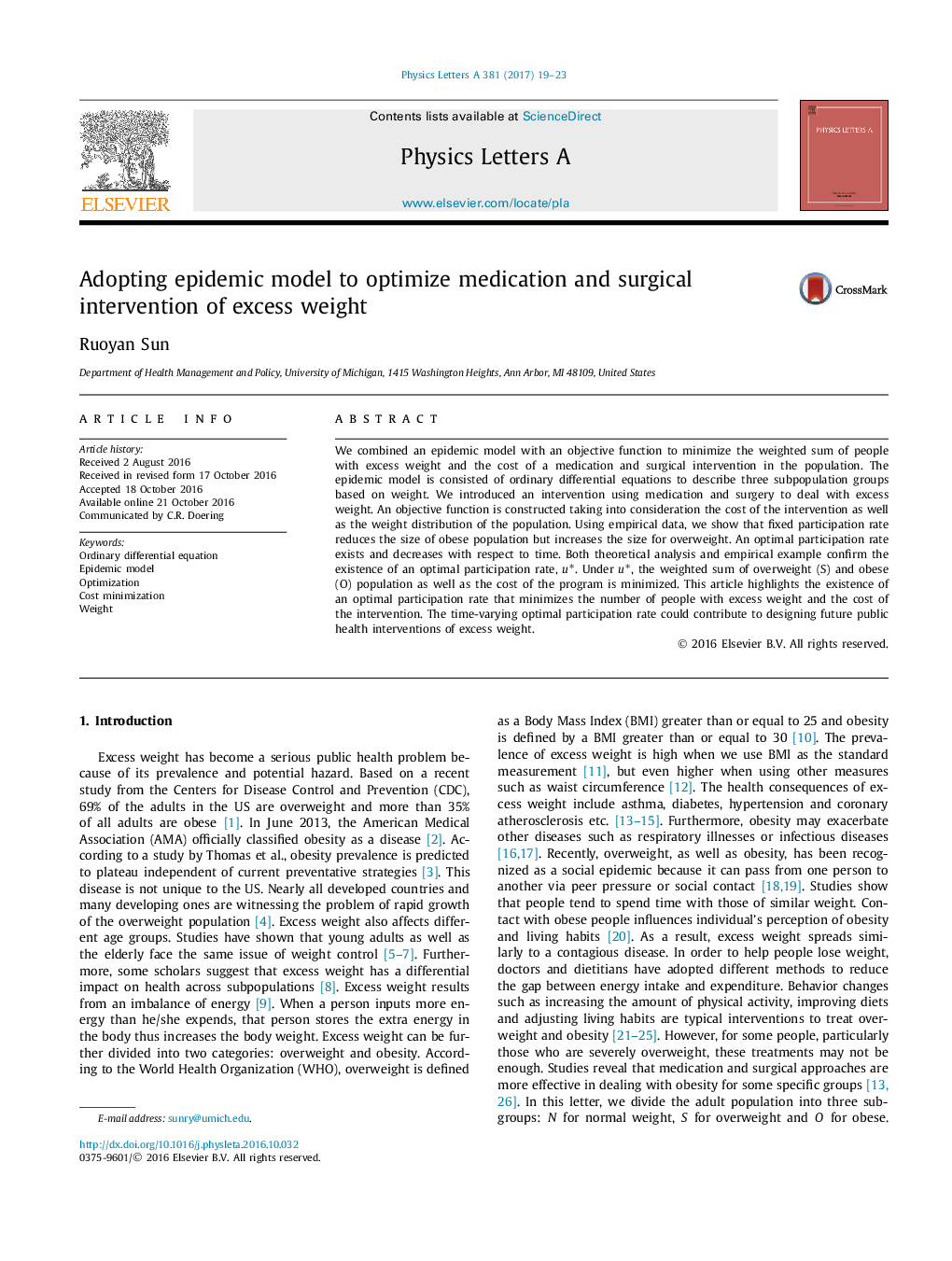| Article ID | Journal | Published Year | Pages | File Type |
|---|---|---|---|---|
| 5496941 | Physics Letters A | 2017 | 5 Pages |
Abstract
We combined an epidemic model with an objective function to minimize the weighted sum of people with excess weight and the cost of a medication and surgical intervention in the population. The epidemic model is consisted of ordinary differential equations to describe three subpopulation groups based on weight. We introduced an intervention using medication and surgery to deal with excess weight. An objective function is constructed taking into consideration the cost of the intervention as well as the weight distribution of the population. Using empirical data, we show that fixed participation rate reduces the size of obese population but increases the size for overweight. An optimal participation rate exists and decreases with respect to time. Both theoretical analysis and empirical example confirm the existence of an optimal participation rate, uâ. Under uâ, the weighted sum of overweight (S) and obese (O) population as well as the cost of the program is minimized. This article highlights the existence of an optimal participation rate that minimizes the number of people with excess weight and the cost of the intervention. The time-varying optimal participation rate could contribute to designing future public health interventions of excess weight.
Related Topics
Physical Sciences and Engineering
Physics and Astronomy
Physics and Astronomy (General)
Authors
Ruoyan Sun,
